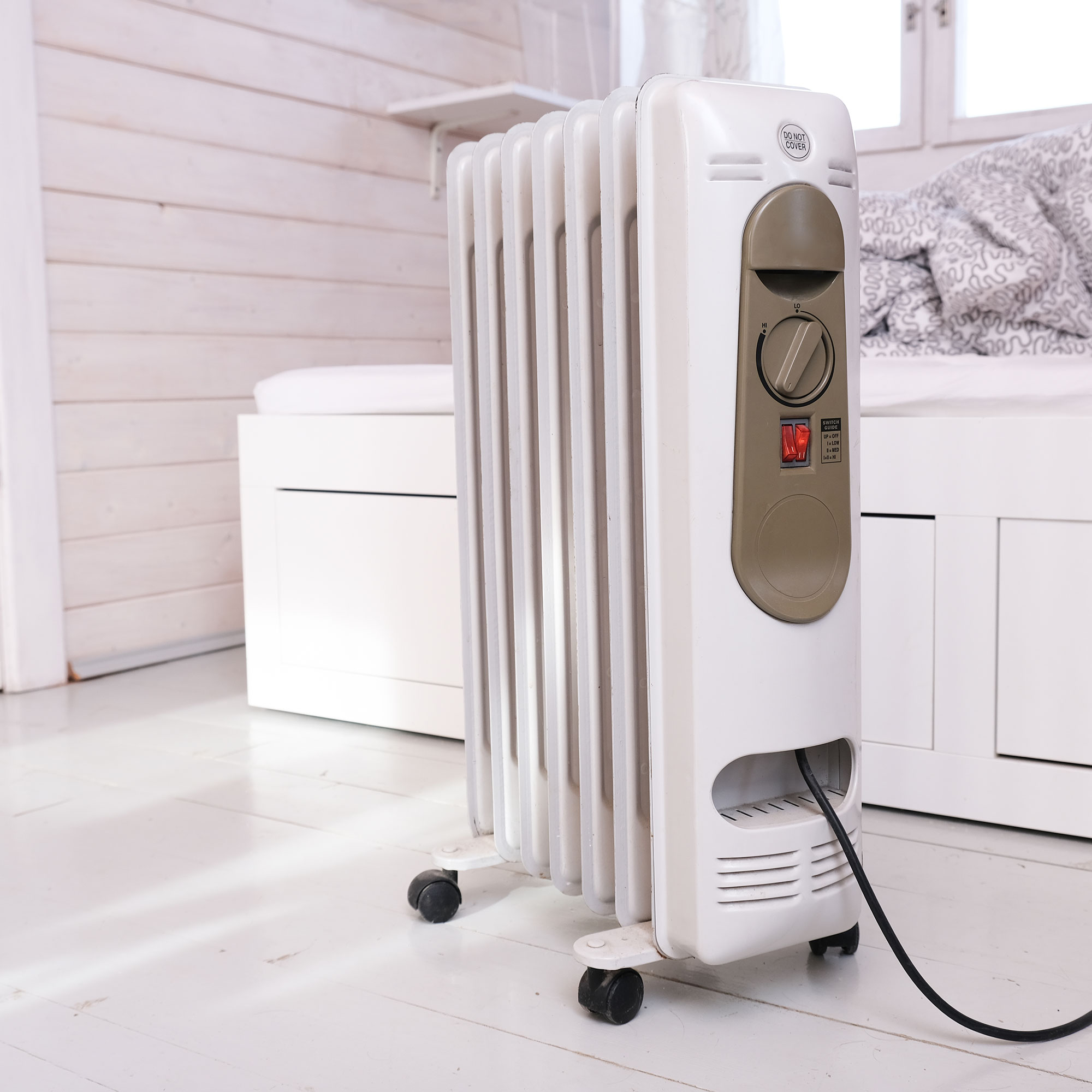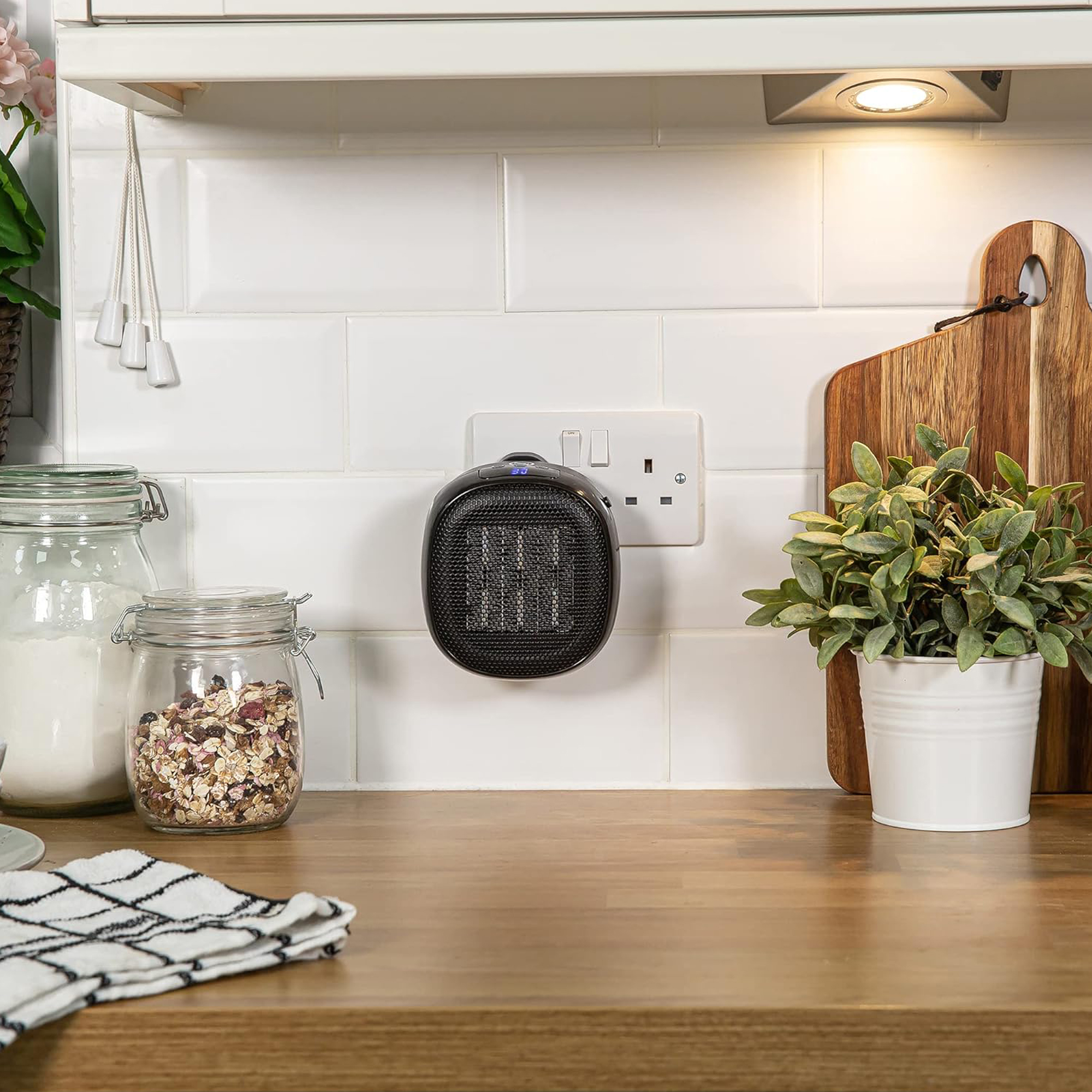Are oil filled radiators any good? The pros and cons you need to consider before investing in one
Could the heating device be the right choice for keeping you and your home warm this winter? The experts reveal all.


Over winter portable heaters are a great way to keep warm without facing a hefty heating bill from rising energy bills. Oil-filled radiators are one of the most portable heaters on the market, but are oil-filled radiators any good?
The best oil-filled radiators provide a quick and easy way to add extra warmth to smaller spaces, helping you to feel warm and cosy over the colder months. But are they as good as central heating or the best electric heaters?
Well, we put this to the experts and overall the consensus is that yes, oil-filled radiators are good. However, there is a little more to it than that. This is why we've broken it down into the pros and cons of using an oil-filled radiator to help you decide if it's the right choice for your home.
What are the pros of an oil filled radiator?
1. Even and long lasting warmth
Oil-filled radiators work in a similar manner to central heating explains Nicholas Auckland, Heating and Energy Expert at Trade Radiators. They work to warm the room ‘without creating 'hot spots' or blowing out any air, which can be uncomfortable, can trigger allergies and can, of course, mean that the room is heated unevenly.’ So, this can make them a great option for providing even warmth to smaller spaces and rooms.
In addition to this, ‘the oil inside stays hot long after being switched off, which helps to keep rooms warmer for longer – a huge bonus in colder temperatures. The oil also heats evenly throughout the radiator, meaning you’re getting the most from the radiator,’ adds Aneesa Khan, Assistant Home Electricals Buyer at VonHaus.

2. Portability
One of the biggest pluses of owning an oil-filled radiator is the fact that most are relatively compact and come with wheels, making them easy to move around the house. So, if someone is feeling particularly chilly or you want to heat a specific space in your home like a small office or reading nook you can pull the oil-filled radiator so that it's placed wherever you need it.
3. Built-in safety features
Most oil-filled radiator models come equipped with a number of handy safety features. So, if you’ve ever asked yourself ‘are oil-filled radiators dangerous?’, we can confirm that as long as they are used correctly, you have nothing to worry about.
Get the Ideal Home Newsletter
Sign up to our newsletter for style and decor inspiration, house makeovers, project advice and more.
From overheat protection to built-in timers and thermostats, many even come with a tip-over switch, meaning if the device is accidentally tipped over it will switch off automatically. All of these certainly give you some peace of mind as you use your oil-filled radiator.

4. Low maintenance
‘Despite being called 'oil-filled', the oil isn’t consumed as such but instead it acts as a heat reservoir to hold the heat,’ Nicholas explains. ‘This means that no refuelling is required, which reduces maintenance pressures and eliminates ongoing costs. All you'll have to do is keep an eye on the cleanliness of the radiator, and the wires to ensure they're in good condition.’
5. Quietness
Oil-filled radiators work almost silently, apart from the occasional glug as they heat up.
‘Unlike fan heaters, which can be quite noisy, oil-filled radiators tend to operate much more silently. This makes them ideal for the likes of bedrooms, offices, or any other space where peace and quiet is important,’ Nicholas explains.
‘Because they heat the oil internally, you’ll only hear the occasional gurgle of oil,’ Aneesa from Vonhaus adds.

6. Aesthetics and choice
Certain fan heaters aren’t exactly the most aesthetically pleasing, while oil-filled radiators come in a wide selection of colours and sizes, allowing you to choose something that fits in with your existing interiors.
‘One of the main benefits of oil-filled radiators lies in their impressive variety. From classic column builds to sleek flat panels and elegantly curved bars, you’re guaranteed to find the perfect accompaniment to your home’s aesthetic,’ Stephen Hankinson, Radiator Expert at Electric Radiators Direct, says.
‘Sizes can range from five fins right up to 17 fins, and there are even some closed fin models available too,’ Aneesa adds.
What are the cons of an oil filled radiator?
1. Slower to heat up
One of the biggest disadvantages of an oil-filled radiator is that it takes longer to heat up compared to other types of heaters, as the oil needs time to reach the desired temperature before it can start radiating warmth. This might not necessarily be a deal breaker for many, but it is worth bearing in mind if you’re looking for more of an immediate heat.

2. Not suitable for larger spaces/rooms
While they can work really well in smaller spaces and rooms, they won’t make much of a difference in a particularly large or open-plan room. ‘They also provide radiant heat to the surrounding area but lack the ability to focus heat in a specific direction, which may not suit all heating needs,’ says Nick Duggan, Managing Director of The Radiator Centre.
3. They can be heavy
Even though they are portable and can be moved from room to room, as you go to take it out of the box or bring it home from the shops, you will notice just how heavy an oil filled radiator can be.
‘This is due to their oil content inside, as well as their heavy metal casing,’ Nick justifies. ‘This is also why they're usually on wheels, so you don't need to pick them up for extended periods of time.’
4. Higher up-front cost
You may find that an oil filled radiator is more expensive than other heaters and radiators, however, the experts would argue that ultimately you get what you pay for, as they are more durable and heat more effectively than some of the alternatives.

5. High surface temperatures
Like you might expect from most radiators or heating devices, an oil filled radiator can get particularly hot, which is beneficial at keeping you warm but can be a bit of a hazard for small children and pets, who might reach out to touch it. So, it’s important that you don’t leave them unattended when it is on or even when it’s cooling down.
Verdict
Taking all of that into consideration in short yes oil-filled radiators are good. ‘Oil-filled radiators offer the perfect balance of efficiency and comfort – delivering steady, silent warmth that lasts long after you turn them off. With no noise, no fuss, and low maintenance, they’re a smart, reliable choice for keeping your home warm without running up your energy bill,’ Stephen says.
However, whether an oil-filled radiator is worth getting depends on your heating needs and overall preferences. For example, ‘they are an excellent choice if you’re looking for a quiet, energy-efficient, and reliable heater that provides consistent warmth without drying out the air. They’re especially suitable for small to medium-sized rooms and spaces where steady, long-lasting heat is desired,’ Nick concludes.
While the initial cost might be higher and they do take a bit longer to warm up, their efficiency and low maintenance often make up for these drawbacks over time. However, for larger spaces or immediate heat, other options like electric fan heaters or central heating may be more suitable and affordable in the long-run.
Our favourite oil-filled radiators

This top-rated oil-filled radiator heats up fast and has three temperature settings. It also includes a thermostat and timer to manage the heat output.

De'Longhi is one of the most reliable manufacturers of oil-filled radiators. This powerful option comes with a 10-year warranty.

This heater uses oil-free heating technology based on a traditional oil-filled radiator to heat up quickly.

Ellis Cochrane has been a Freelance Contributor for Ideal Home since 2023. Ellis has been writing about homes, interiors and gardens for four years now, with her also contributing to House Beautiful, Country Living, Expert Reviews, Real Homes and Stylist.
-
 5 items I always add to a bathroom to make it look better instantly as a professional interior stylist
5 items I always add to a bathroom to make it look better instantly as a professional interior stylistThese are the things I add to every bathroom photo shoot I style
By Laurie Davidson
-
 Should you have an air purifier on while you're cleaning? Air quality experts say this secret weapon will improve your cleaning routine
Should you have an air purifier on while you're cleaning? Air quality experts say this secret weapon will improve your cleaning routineYou'll need to follow 5 steps to make the most of it, though
By Rebecca Lawton
-
 The Levitex Sleep Posture Pillow is so good, it just converted me from a front sleeper into a side sleeper – if you lie on your side at night, this is the pillow for you
The Levitex Sleep Posture Pillow is so good, it just converted me from a front sleeper into a side sleeper – if you lie on your side at night, this is the pillow for youI tried the Levitex Sleep Posture Pillow for a month, and I’m never looking back
By Amy Lockwood
-
 Electric heater vs electric blanket — heating experts weigh in on the effectiveness (and affordability) of these winter warmers
Electric heater vs electric blanket — heating experts weigh in on the effectiveness (and affordability) of these winter warmersConstantly cold at night? Experts weigh in on whether an electric heater or electric blanket will suit you best
By Lauren Bradbury
-
 How many electric heaters do you need to heat a house? It all depends on these 5 things, according to experts
How many electric heaters do you need to heat a house? It all depends on these 5 things, according to experts5 things to consider if you want to know exactly how many you’ll need to beat the chill this winter
By Lauren Bradbury
-
 ‘This is how we saved £25,000 on our extension — it never would have been affordable otherwise'
‘This is how we saved £25,000 on our extension — it never would have been affordable otherwise'See how we turned an ugly car port into a luxury media room on a budget
By Laura Crombie
-
 Side return extension costs — how much will it cost you to add space and will it be worth it?
Side return extension costs — how much will it cost you to add space and will it be worth it?Trying to budget for your side return extension costs? Our guide makes it easy
By Natasha Brinsmead
-
 How to make the most of living on-site during a renovation project — according to those who have done it
How to make the most of living on-site during a renovation project — according to those who have done itThis is what it's like to live on-site during a renovation project, and how you can make the most of it, by those who have been there, done it and lived to tell the tale
By Sarah Handley
-
 Is a ceramic heater or oil-filled radiator better for warming a home? The pros and cons to consider before investing
Is a ceramic heater or oil-filled radiator better for warming a home? The pros and cons to consider before investingWe spoke to industry experts to help you decide which heater to invest in to warm up your home
By Eilidh Williams
-
 Single storey extensions — the ultimate guide to adding more space to your home
Single storey extensions — the ultimate guide to adding more space to your homeConsidering a single storey extension as a way to add space and value to your home? Our expert guide takes you through everything you need to know, from permissions and budgeting to foundations and the realities of living on-site
By Natasha Brinsmead
-
 Can I leave an oil filled radiator on overnight? – Here’s what you need to know
Can I leave an oil filled radiator on overnight? – Here’s what you need to knowWe asked the experts about the practicalities, both in terms of safety and your energy bills
By Ellis Cochrane